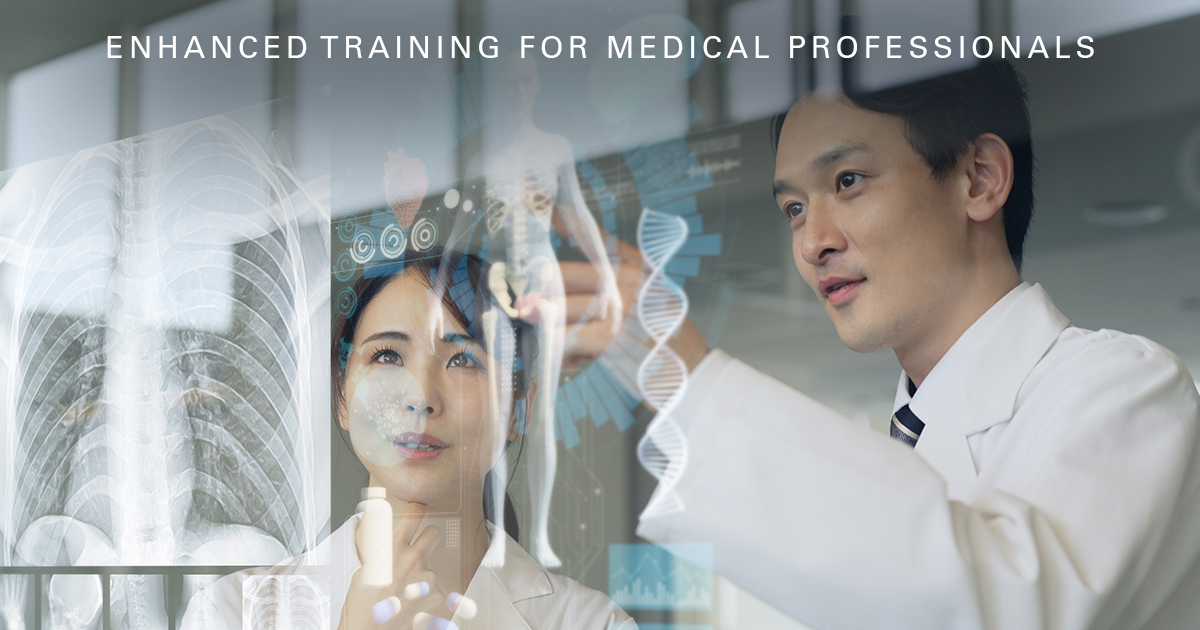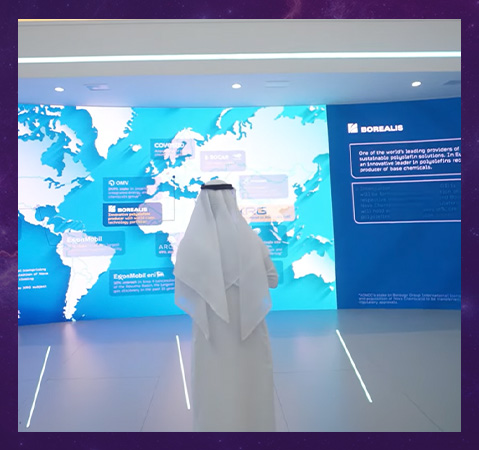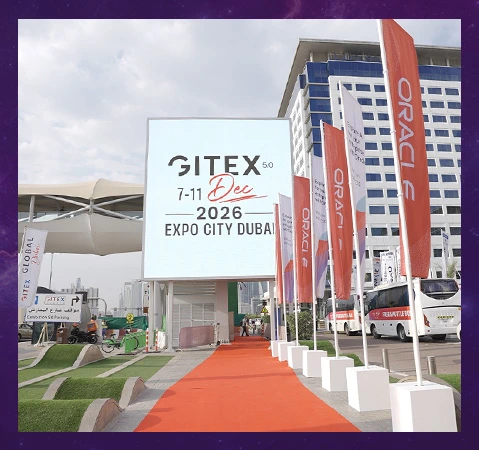
Transforming Healthcare Through Immersive Experiences
share

Table of Contents
Transformed Patient Engagement
Reduced Pain and Anxiety
Enhanced Training for Medical Professionals
Overall Benefits for the Healthcare Sector
Looking for a Strong Partner to Elevate Your Healthcare Technology?
Immersive technologies are transforming the healthcare industry by providing captivating and interactive experiences for patients. These encounters provide a variety of advantages, effectively influencing both the quality of patient care and overall state of well-being. Here is an analysis of several crucial domains where immersive technology is having a significant impact:
Transformed Patient Engagement
The traditional medical appointment is being transformed due to the thrilling potential of immersive technologies. Technology is transforming patient participation, promoting a more proactive, knowledgeable, and empowered healthcare experience.
Virtual Reality (VR) for Education and Understanding
Traditional methods of patient education can often feel impersonal and need more engagement. Immersive technologies like VR are revolutionizing this aspect of healthcare by creating interactive and engaging experiences. This interactive visualization allows them to see the anatomy in detail, understand how their condition affects it, and ask questions in a more natural setting.
Similarly, immersive technologies can be used to explore treatment options, allowing patients to virtually experience different procedures and make informed decisions alongside their doctors. This enhanced understanding fosters better communication and trust between patients and healthcare providers, ultimately leading to more informed decision-making and improved adherence to treatment plans.
Gamification in Healthcare
Gamification is revolutionizing the field of physical therapy by creating captivating experiences, especially for young individuals. The process entails utilizing interactive mobile applications to monitor advancement, instructional games to instruct on medication adherence, and VR therapy to simulate the exercise of specific abilities. These techniques aid in maintaining patients' motivation and promoting adherence to medicine.
Wearable Tech in Healthcare
Wearable technology is transforming healthcare by offering immediate monitoring of vital signs, allowing healthcare providers to deliver proactive care and early intervention. Smartwatches have the capability to securely transmit data to healthcare doctors, allowing them to monitor heart rate, blood pressure, and sleep patterns.
In addition, they can assist with medication management by linking to dispensers or providing customized warnings. Wearable technology facilitates bidirectional contact with healthcare practitioners, enabling patients to actively engage in their healthcare journey. This technology enables patients to adhere to their prescription regimes and receive customized reminders.
Telemedicine in Healthcare
Telemedicine provides a novel means of obtaining healthcare by removing geographical limitations and reducing lengthy waiting periods. Users can connect with specialists via secure video calls, guaranteeing access to top-quality care even in faraway locations. Telemedicine also enables remote follow-up appointments, lowering both stress and the amount of time spent in waiting rooms.
Moreover, telemedicine platforms offer a means of connecting with mental health experts, particularly for individuals residing in remote regions or encountering difficulties with transportation. This enables them to receive essential virtual assistance. In summary, telemedicine is a groundbreaking remedy for improving access to healthcare.
Reduced Pain and Anxiety
Immersive technology is revolutionizing the healthcare industry by providing novel methods to effectively address pain and anxiety. Here is the method:

Distraction During Medical Procedures
Medical procedures, including those that are considered routine, have the potential to induce anxiety. Immersive technology provides an effective answer by offering a pleasant diversion during these anxiety-inducing situations. Envision a scenario where a dental patient is being transferred to a serene virtual beach setting, complete with tranquil sounds of waves and mild gusts of wind.
This diversionary strategy is advantageous for both patients and healthcare workers. Patients undergo a more tranquil and less anxiety-inducing operation, while healthcare providers can operate more effectively with a patient who is more at ease. The technology's capacity to divert patients' attention during medical operations provides opportunities for enhanced patient care and less dependence on potentially potent sedatives.
Distraction During Medical Procedures
Individuals grappling with chronic pain may face ongoing challenges in their daily lives. VR presents a promising prospect by offering cutting-edge methods for managing pain. Imagine a scenario where a patient suffering from persistent back pain is transported to a tranquil virtual forest setting, complete with soothing noises and guided meditation activities.
The device also serves as a helpful instrument for promoting mindfulness, a practice recognized for its ability to effectively manage chronic pain. In addition, the headgear can be utilized to alleviate pain by diverting patients' attention through the use of virtual games or hobbies, thus shifting their focus away from the sensation of pain.
Biofeedback in Healthcare
Biofeedback is a training tool that assists individuals in comprehending and controlling their body's internal signals to enhance their overall well-being. The process entails the utilization of sensors affixed to the skin or fingers to detect minute variations in bodily functions, such as heart rate, muscular tension, skin temperature, and brain wave activity. The collected data is analyzed and presented instantly via visual or audio feedback systems.
Enhanced Training for Medical Professionals

Immersive technology are causing a significant transformation in the field of medical instruction. These technologies are revolutionizing conventional approaches, providing a more authentic, captivating, and efficient means for healthcare workers to enhance their abilities.
Surgical Simulation Technology and Training
The field of surgery requires meticulousness and mastery. Immersive technologies are transforming surgical training by providing highly realistic simulations that enable medical practitioners to refine their abilities in a secure, virtual setting. Envision a surgeon honing their skills by performing an intricate laparoscopic procedure on a simulated patient model.
Virtual reality simulations have the ability to accurately recreate delicate anatomical structures, enabling surgeons to practice difficult movements and decision-making processes before to performing them in the operating room. This virtual training platform enhances both self-assurance and surgical proficiency, as well as coordination.
Utilizing advanced technology, surgeons have the ability to simulate and train for uncommon treatments or practice certain intricate steps of complex surgeries on a virtual patient. This eventually results in the potential for enhanced patient outcomes and greater surgical safety.
Augmented Reality (AR) Surgical Guidance
AR surgical guidance uses glasses or headsets to display real-time patient data onto the surgeon's visual field during a surgical procedure. This technique improves the clarity of visual representation, enabling surgeons to detect concealed anatomical components, minimizing complications, and enhancing the process of making informed choices. Surgeons can make informed judgments by displaying real-time data, such as blood flow or drug response.
AR guidance reduces the occurrence of human error by emphasizing crucial locations and possible dangers during surgical procedures. Furthermore, augmented reality simulations can be utilized to educate and prepare surgeons in a secure setting prior to conducting intricate surgeries on actual patients.
Haptic Technology in Healthcare
Haptic technology integrates the tactile sense, enabling medical personnel to perceive the resistance and texture of virtual objects, replicating real-world operations. This technique increases the process of training, improves the procedure of catheterization, and can be seamlessly incorporated into telemedicine robots to enable remote surgery.
Additionally, it assists in rehabilitation therapy by offering immediate feedback on patients' motions and extent of motion. Additionally, it can provide guidance for the placement of a catheter during minimally invasive operations, thereby decreasing the likelihood of tissue harm. In summary, haptic technology represents a groundbreaking breakthrough in the field of medical technology.
3D Printing in Healthcare
3D printing is transforming the field of surgery by producing personalized replicas of organs, bones, or malignancies using a patient's images. By utilizing this technology, it becomes possible to create customized surgical plans, enhance contact with patients, provide more advanced training for medical students and residents, and develop more sophisticated prosthetic designs. 3D models aid in visualizing the surgical approach, formulating individualized treatment plans, and doing preoperative practice. Additionally, they improve patient comfort and functionality by offering a concise and visually captivating elucidation of intricate operations.
Overall Benefits for the Healthcare Sector

VR and AR are transforming the healthcare industry by providing immersive experiences that bring significant advantages to both patients and healthcare practitioners. Here is a comprehensive analysis of the main benefits:
Improved Patient Satisfaction in Healthcare
Immersive technology is revolutionizing the manner in which patients engage with the healthcare system. Favorable encounters can result in a substantial increase in patient contentment. This change in perspective encourages a more favorable connection with healthcare, which enhances active involvement and compliance with treatment regimens.
VR headsets can be utilized to develop virtual tours of hospitals or treatment facilities, thereby alleviating anxiety in patients who are unfamiliar with the surroundings. Immersive technology enhances the patient experience by promoting a feeling of empowerment and control over their healthcare journey, leading to greater satisfaction.
Increased Efficiency and Cost Reduction in Healthcare
Immersive technologies offer advantages that go beyond only pleasing patients; they can also enhance productivity and decrease costs in the healthcare industry. Utilizing VR technology for teaching medical personnel has the potential to enhance their skills and minimize medical errors. Consequently, this can result in expedited recuperation periods for patients and reduced healthcare expenses in general.
Furthermore, VR can be utilized to give patient education and consultations from a distance, hence avoiding the need for patients and clinicians to travel and incur related costs. Immersive technologies provide a possible method for creating a more efficient and cost-effective healthcare system that is also environmentally sustainable.
Big Data & Analytics in Healthcare
Big data analytics is transforming healthcare by means of the analysis of enormous patient data comprising medical records, genetic information, and treatment results. Early diagnosis and tailored treatment plans result from the trends and patterns in illness development, pharmaceutical efficacy, and patient demographics this data reveals. By means of a patient's medical background and lifestyle choices, big data algorithms may also forecast possible health hazards, thereby offering individualized advice for preventive therapy.
Robotics & Automation in Healthcare
Robotics and automation are transforming surgery by improving precision and dexterity in less invasive operations, lowering scarring, and promoting speedier recovery. Robotic systems enable surgeons with tremor-free motions and expanded perspectives, resulting in higher accuracy and better outcomes. For example, a surgeon using a robotic arm to do delicate eye surgery can reduce human error.
Furthermore, robots can do repetitive duties such as drug delivery, allowing healthcare professionals to focus on more complicated patient interactions. This advancement in surgical precision is expected to usher in a new era of patient care and communication.
Looking for a Strong Partner to Elevate Your Healthcare Technology?

Sentient By Elysian is at the forefront of the innovative future that medicine has ahead. The company focuses on immersive events improving communication, training, and healthcare education. Sentient By Elysian supports other fascinating developments like these:
1. Mechatronic Systems Revolutionizing Medical Simulation:
Mechatronic systems are robots combining mechanical, electrical, and software elements. Imagine working on delicate procedures on life-like robots, recreating the sensation of tissues and the complexity of actual operations. This gives surgeons a secure and regulated space in which to develop their abilities and raise patient outcomes.
2. DNA Manipulation and Precision Medicine Unleashed:
Sentient By Elysian offers cutting-edge DNA modification technologies like CRISpen, which are driving the creation of precision medicine techniques, This lets doctors customize therapies to fit the genetic profiles of each patient, therefore enhancing effectiveness and lowering side effects.
Users using headsets such as Magic Leap or Apple Vision Pro can inspect a sample featuring troublesome DNA sequences and replace compromised strands. Once this is finished, a trigger is sent to the Robotic Arm Holocube, which then undertakes reconstruction and simulation to ascertain whether DNA integration is compatible. This allows a physically fit, healthy person to develop with normal vital components.
3. AV Solutions Elevating Healthcare Events:
Sentient By Elysian offers premium audio-visual solutions capable of improving medical conferences and displays. Imagine arresting presentations highlighting the most recent developments in artificial intelligence, precision medicine, and other healthcare technology. Clear sound and interesting images will improve the experience for attendees and start conversations on the direction of medical research.
4. AI-Powered Medical Imaging and Diagnosis:
Imagine interactive displays showing how superhuman precision in X-ray and other scan analysis by artificial intelligence systems speeds diagnosis and improves patient care. By helping radiologists and clinicians find little anomalies they would overlook, this technology empowers them.
5. Mixed reality in patient healthcare:
Sentient By Elysian uses MR technology to revolutionize the healthcare industry. AR/VR headsets enable clinicians to visualize intricate 3D representations of a patient's anatomy, facilitating precise surgical planning and procedure execution. Patients can utilize these headsets to visualize 3D representations of their own anatomies and medical apparatus, facilitating a deeper comprehension of their medical issues.
As an illustration, individuals with Alzheimer's disease have the ability to perceive prompts that are exhibited via the use of a headset or spectacles. Furthermore, medical students can utilize these headsets to simulate intricate procedures within a secure, virtual setting. Research indicates that this technology enhances the learning process in comparison to conventional approaches.
6. Multisensory rooms for healthcare
Multisensory rooms offer a serene and curative setting for individuals with diverse ailments. Envision rooms equipped with calming views, sounds, aromas, and tactile sensations that can effectively alleviate anxiety, pain, or sensory overload. This technology has the potential to enhance the well-being of patients in hospitals, clinics, and rehabilitation centers.
7. Digital Twins for Enhanced Healthcare Education and Training
This section focuses on the transformative potential of Sentient By Elysian's digital twins, which are virtual reproductions of actual systems, in the field of healthcare education. Interactive 3D models of the human body provide students with the opportunity to investigate anatomy, visualize medical issues, and test therapies inside a secure and immersive setting. Customized avatars and live data monitoring can increase training for healthcare professionals, enabling them to practice tailored treatment strategies on virtual patients.
8. Chatbots & Virtual Assistants
AI-driven chatbots and virtual assistants are transforming patient care with round-the-clock assistance, tailored health information, and decreased waiting periods. These technologies have the capability to respond to fundamental health inquiries, offer tailored instruction, and manage everyday responsibilities such as arranging appointments and refilling prescriptions. This enables people to make well-informed healthcare decisions and minimizes stress.
Chatbots have the ability to offer straightforward and precise instructional resources, enabling individuals to enhance their understanding of their own health. In addition, virtual assistants have the capability to do mundane duties, allowing healthcare personnel to allocate more time towards intricate patient relationships. In general, these instruments that utilize artificial intelligence are revolutionizing the provision of medical treatment and improving the level of contentment experienced by patients.
9. 3D Printing
3D printing is transforming medical education and training through the production of very realistic anatomical models. These models offer a secure and authentic training setting for medical students and surgeons, accurately reproducing the tactile sensation and consistency of actual tissue. Additionally, they can be utilized for customized surgical strategizing, enabling physicians to visualize vital anatomical components and devise an individualized approach for maximum results.
In addition, the utilization of 3D models might enhance patient communication by enabling surgeons to elucidate intricate medical problems more effectively, thereby facilitating informed consent and mitigating patient anxiety.
10. Blockchain
Blockchain technology establishes a reliable and easily understandable healthcare environment through the implementation of a digital ledger system. It employs intricate cryptographic techniques to generate an immutable log of patient information, hence reducing the likelihood of data breaches and unauthorized entry.
Blockchain enhances interoperability by facilitating smooth data sharing across healthcare providers, thereby ensuring the uninterrupted flow of care and enabling well-informed treatment decisions. Patients now have the ability to manage their data, allowing them to give certain healthcare professionals access to particular portions of their medical records. This promotes privacy and enables patients to make well-informed decisions.
Through collaboration with Sentient By Elysian, you can tap into a group of specialists who can assist you in fully harnessing the capabilities of these technologies and generating genuinely revolutionary experiences for both patients and healthcare professionals.

























